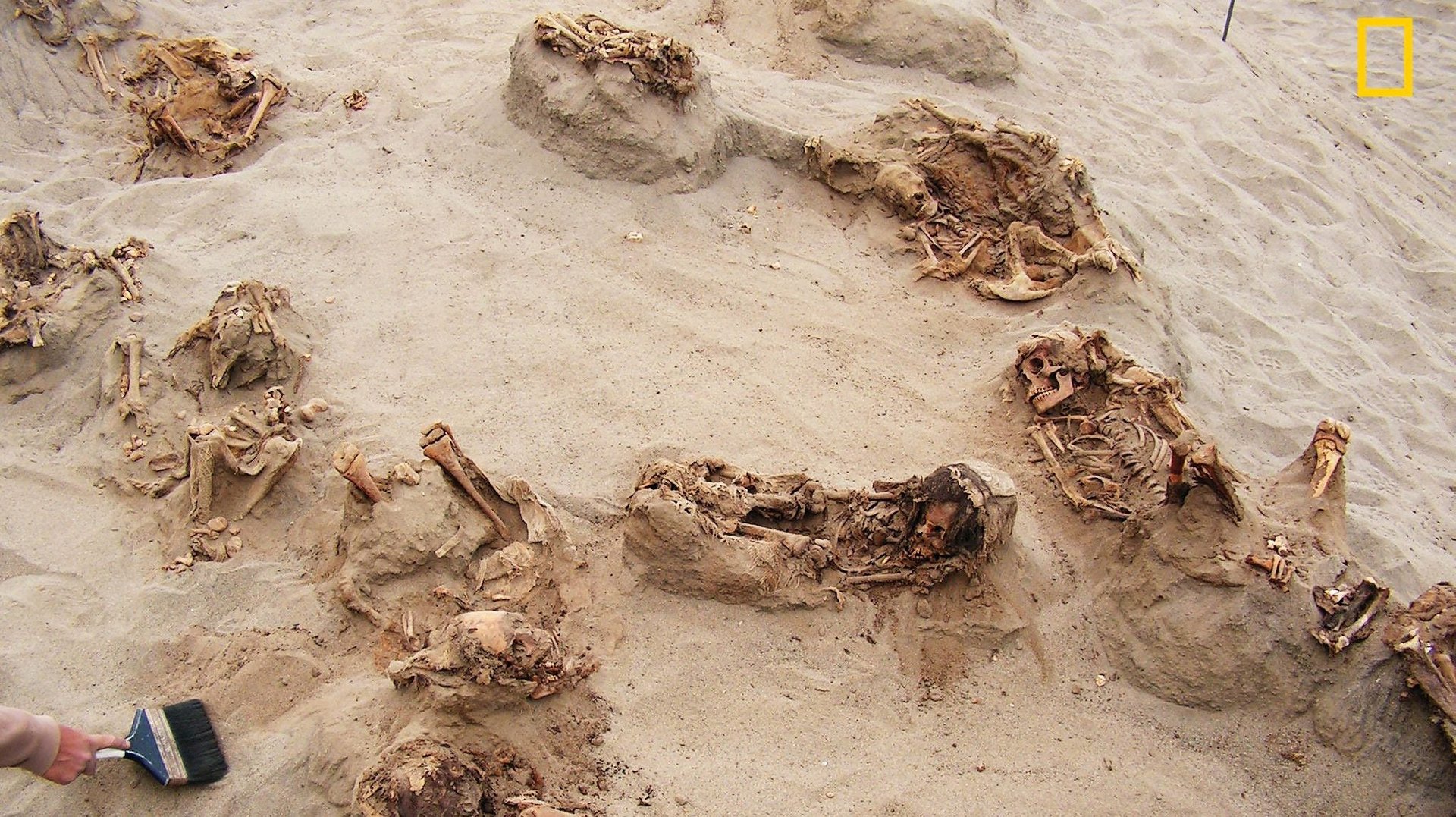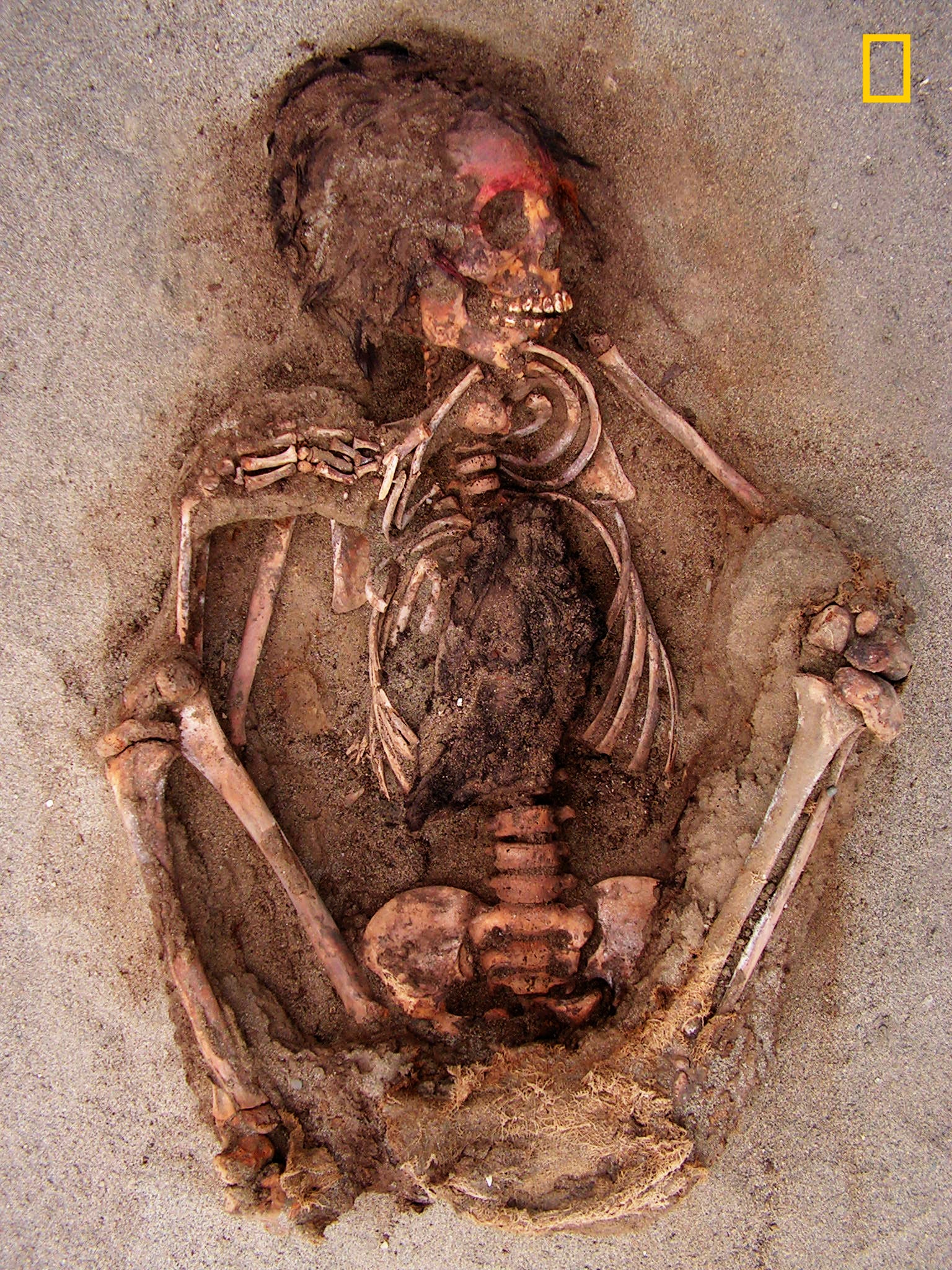Scientists believe they just discovered the largest known child sacrifice in human history
An international team of scientists funded by the National Geographic Society has discovered what appears to be the largest instance of mass child sacrifice in human history on a site known as “Huanchaquito-Las Llamas,” on the northern coast of Peru.


An international team of scientists funded by the National Geographic Society has discovered what appears to be the largest instance of mass child sacrifice in human history on a site known as “Huanchaquito-Las Llamas,” on the northern coast of Peru.
The mass sacrifice, in which more than 140 children were ritually killed, took place roughly 550 years ago, near the capital of the Chimú Empire, which ruled much of Peru’s Pacific coast before being overtaken by the Incas, according to National Geographic.

The scientists’ findings, reported today (April 26), are not for the weak of heart. Their evidence that the killings were part of a ritual sacrifice include the fact that the victims’ chests were systemically “cut open and pulled apart, perhaps to facilitate the removal of the heart,” evidently by well-practiced hands. The 140 young victims were between five to 14 years old, and were buried facing the Pacific Ocean, along with 200 llamas.
What makes this discovery so unprecedented is its scale, Kristin Romey, National Geographic’s archaeology editor, tells Quartz. Before the Las Llamas discovery, the largest known mass child sacrifice was the Templo Mayor event, in which 42 children were killed in the ancient Aztec capital of Tenochtitlán, sometime between 1481 and 1486.
While many early empires and civilizations practiced human sacrifice, child sacrifice was rare. So what could have motivated the Chimú to resort to it? The researchers have different theories. The most prominent one suggests that heavy rains were flooding the generally arid coastline of Peru. Scientists from the team, along with others not involved with the project, posit that the Chimú may have taken the drastic step of sacrificing children to convince the gods to stop the torrential rains, which were destroying their livelihoods and political system.
The sacrifice of 140 children feels heart-wrenching in contemporary times. But it’s useful to remember that the Chimú relied extensively on a sophisticated agricultural and marine infrastructure that could have been destroyed by the climate disaster. As Haagen Klaus, an anthropologist at George Mason University, told National Geographic, when faced with imminent destruction, “people sacrifice that which is of most and greatest value to them.”